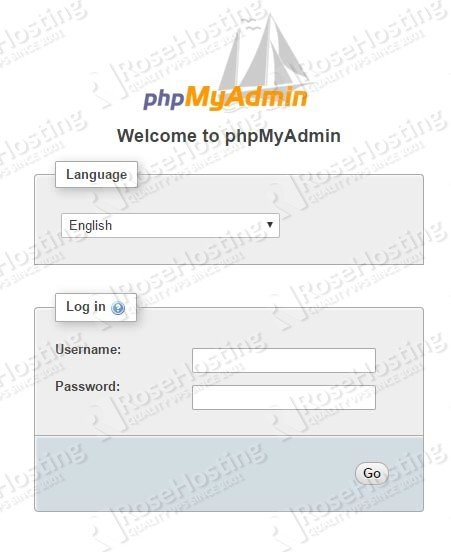

Ubuntu install phpmyadmin password#
To access the phpMyAdmin interface open web browser and type your server’s public IP address or domain name followed by /phpmyadmin: Enter the administrative account username and password which you created on previous step and hit on Go button.Īfter successful log in, you’ll see the phpMyAdmin user interface, which will look something like this: Conclusion #įinally, you have successfully installed phpMyAdmin with Nginx on Ubuntu 18.04 system. * TO WITH GRANT OPTION Accessing phpMyAdmin # PHP modules php-mysqli Location of phpmyadmin. Next, create a new administrative user with strong password and grant appropriate permissions by typing: mysql> CREATE USER IDENTIFIED BY 'STRONG-PASSWORD' Installation of phpMyAdmin On ubuntu 18.10 LAMP stack (Linux,Apache,MySQL and PHP ) installed.
Ubuntu install phpmyadmin update#
As your non-root sudo user, update your server’s package index if you haven’t done so recently: sudo apt update Following that you can install the phpmyadmin package. The first one is package configuration where you have to select which web server needs to be reconfigured automatically. During the installation, it will open several prompts.

You can login by below command: sudo mysql You can use APT to install phpMyAdmin from the default Ubuntu repositories. PhpMyAdmin is on the standard Ubuntu repository. Once done, you can use the following command to install PHPMyAdmin in Ubuntu: sudo apt install phpmyadmin. Now, we will use that user to login to phpMyAdmin and do further administrative tasks on our MySQL or MariaDB server. This user will have the same privileges as the root user and will be set to use the mysql_native_password authentication method. To set up PhpMyAdmin on your Ubuntu system, use the following apt install command to install the phpmyadmin package: sudo apt install phpmyadmin. Since phpMyAdmin requires users to authenticate with a password, so instead of changing authentication method we will create a new administrative MySQL account in order to access the interface. It will not be good to change authentication method for the MySQL root user. After securing the MySQL database, you must execute the following command to install the latest version of phpMyAdmin on the Ubuntu server. In order to log in to phpMyAdmin as your root MySQL user, you will need to switch its authentication method from auth_socket to mysql_native_password. This will increase some greater security and usability in many cases, but it can also complicate when you need to allow an external program like phpMyAdmin. It means that you can’t authenticate as a root by providing a password. In Ubuntu systems, the root MySQL user is using the auth_socket plugin by default to authenticate. Sudo ln -s /usr/share/phpmyadmin /var/www/html Creating MySQL User and Set Privileges # Install phpMyAdmin Select Apache2 for the server Choose YES when asked about whether to Configure the database for phpmyadmin with dbconfig-common Enter your.


 0 kommentar(er)
0 kommentar(er)
